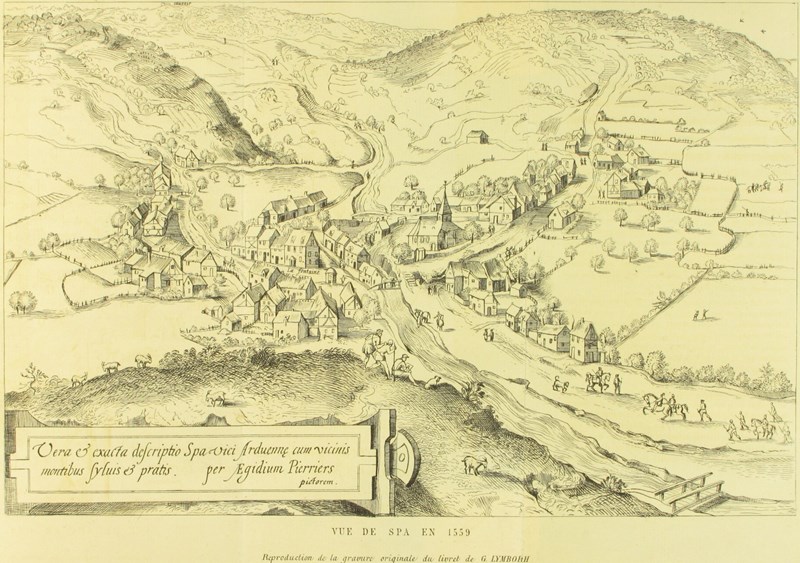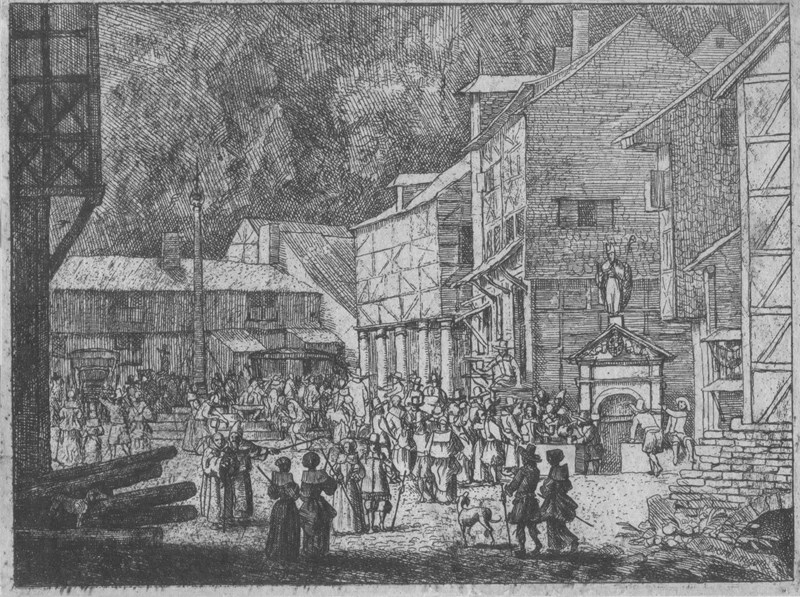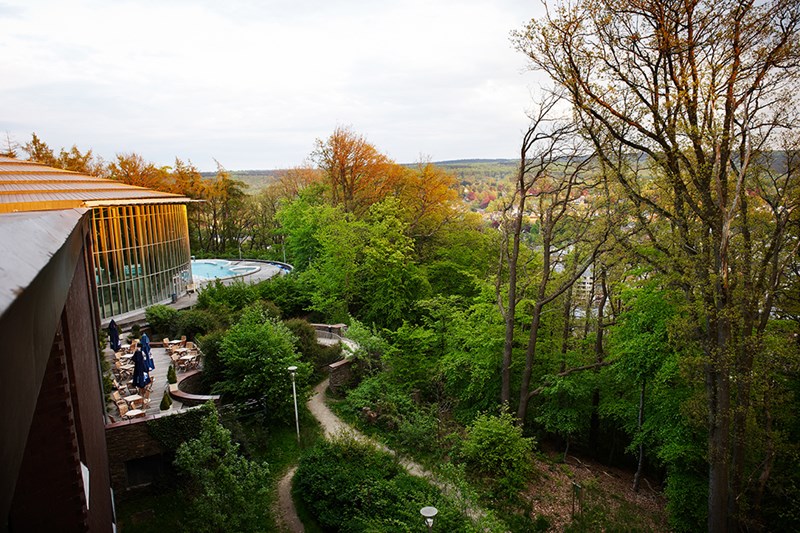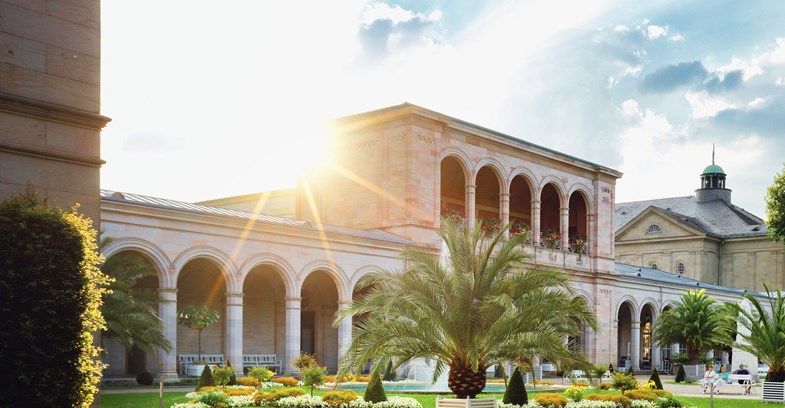Spa History of Spa
Early beginnings
The name “Spa” is said to be derived from the Latin sparsa fontana. It seems that the quality of the water has been recognised since the first century CE, when the many ferruginous (iron rich) springs were used by the Romans. In the twelfth century, Spa was no more than a village around the main spring (“pouhon”). In the sixteenth century, the first work on the quality of the waters was realised by the physician (Lymborh Gilbert) of the Prince Bishop of Liège. "Des fontaines acides de la forêt d’Ardenne et principalement de celle qui se trouve à Spa" (Concerning the acid springs in the forest of Ardenne and principally the one at Spa), was a short description naming 39 mineral springs in the Liège Ardenne. This contributed to expand Spa’s reputation.

The birth of a spa town
In 1572, Spa became a municipality in its own right and began to develop more quickly. Spring water was bottled for export at least from 1583 (the date of the earliest preserved record mentioning water export for Henry II at Mezières in France). The town was also notable for the tolerance shown by the Prince-Bishop when he came into contact with different currents of thought and religion and for the Principality’s statute of neutrality. Crenotherapy, treatment through intake of the natural mineral waters, became popular and physicians wanted to discover the source of the healing powers of Spa’s waters.

Golden age
In 1717, Tsar Peter the Great (1672-1725) took the waters in Spa and was “healed”. This event was the starting point of the international recognition of the town that became the social meeting place for the European aristocracy who were also attracted by the elite entertainment they found there. Spa became the “Café de l’Europe”. Aside from the cure, the resort’s popularity was more linked to the development of gaming authorised by the Prince-bishop of Liège. This prompted the opening of the oldest casino in Europe in 1770, the Waux-Hall (which is still in place). This was also followed by aristocratic rites such as walks around the city.
![]()
From aristocracy to bourgeoisie
In the nineteenth century, visiting spas became the foundation for nascent European popular tourism that appealed to the expanding middle classes. During the second half of this century, the town was transformed into a cutting-edge of progress thermal town. Great urbanistic changes gave Spa its present appearance: the Wayai river was vaulted, a new thermal bath was built as well as the covered Gallery Leopold II, the buildings housing the main springs were renovated or rebuilt, and a pleasure lake and kiosks for music were built. Spa still maintained its close and high-quality relationship with nature by establishing its tourism infrastructure harmoniously in the landscape: hotels, villas, racecourse, aerodrome, railway, ice houses and other necessities for a discerning clientele.
![]()
Continuing tradition
The turn of the twenty-first century witnesses that the character and sense of Spa as a town of welfare and wellbeing which has its roots in very remote time is still alive. It is no coincidence that Spa have become synonymous with a place where mineral water may improve your health. A stay in Spa is still invigorating thanks to balneotherapy, with the carbogazeous water of the pouhons, the numerous walks and the wide array of cultural and sporting facilities and events throughout the year. As prescribed, your body and soul require water, movement and to have enjoyment. Today, the Spa water is still distributed worldwide and the thermal center nestled in the heart of nature, welcomes curists for traditional balneotherapy treatments, beauty care based on thermal water and thermoludism.


